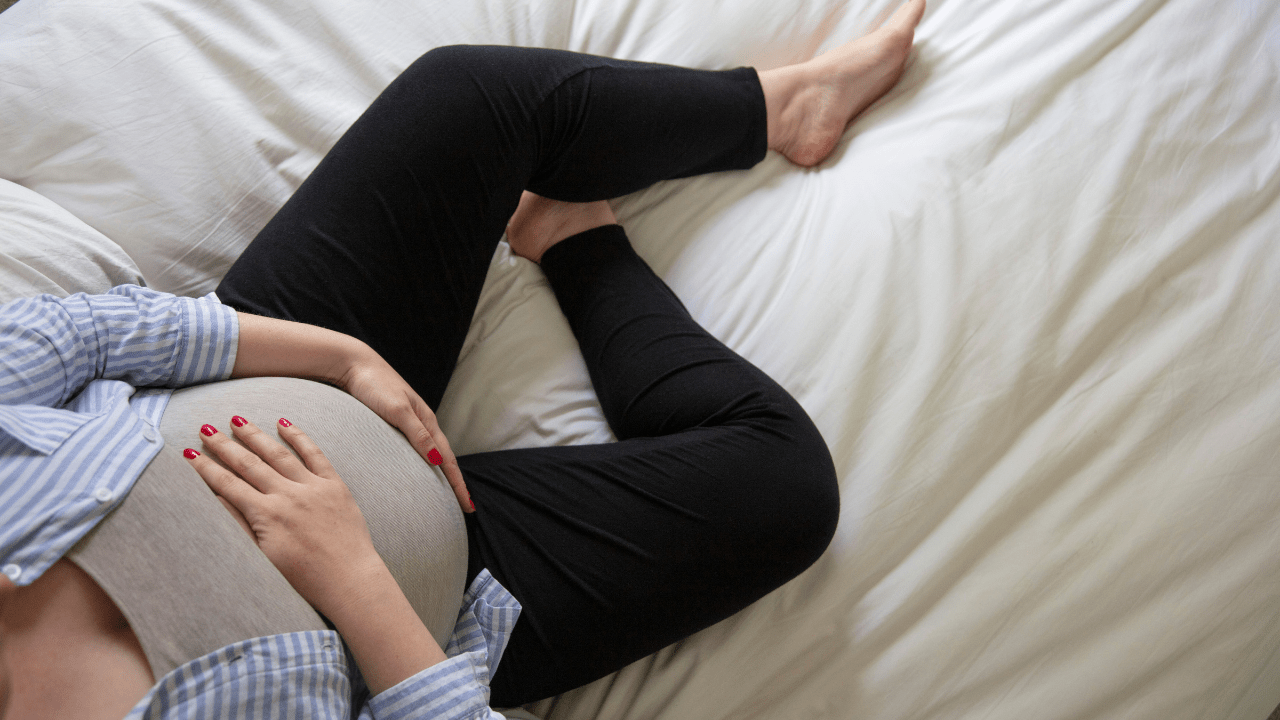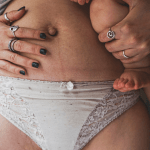Whether you’re an expecting mother preparing for childbirth or a birth partner seeking ways to support your loved one, this blog will help you understand the benefits of perineal massage and learn how to incorporate it into your pregnancy and birthing journey.
First of all, what is the perineum?
The perineum is the space between the opening of the vagina and the anus. Typically, the perineum is between 2 to 5 centimeters long. The perineum stretches during childbirth to allow for the baby to be born. Most people don’t think about their perineum unless it becomes uncomfortable, or during pregnancy and when preparing for birth.

What is a perineal massage?
Perineal massage is a technique which can be used during pregnancy to help stretch the perineum so there is a less risk of tearing when the baby is born, especially with a first birth. Perineal massage can also help to stretch the skin and prepare you for the sensations of burning, stinging and stretching which can happen when the baby’s head is coming through.
Some women find it easier than others to massage their perineum. And it can be helpful to have a partner support. It’s important to remember that you have the right to choose and what is right for you and your body. Not all pregnant women will want to massage the perineum. Personally myself, I never massaged my perineum because I didn’t know that this was available to help prevent tearing and if I were to go through.
Having a second vaginal birth, I definitely would massage my perineum or get some help from a PT to find out how to perform this perineum massage if you’re uncomfortable to do it yourself. This will go a long way in the postpartum recovery where you want to be your healthiest self to give all your energy to your baby.
When is it safe to start a perineal massage?
The general guidelines suggest starting the massage at around week 34 or 35 of pregnancy and doing it a couple of times per week, right up to when the baby is born. The best time to massage your perineum is when you’re relaxed and have time. At first, it may feel uncomfortable and you may not be sure that you’re doing it the right way. However, with practice, you’ll find becoming more familiar with your own body and the feeling of how to massage your perineum.

How can the perineal massage help you during birth?
The perineal massage helps to prepare the vaginal opening for the stretching and pressure sensations that happen as the baby is crowning and being born. It also helps to prepare the perineum during late pregnancy and it may encourage more elasticity and reduce the risk of tearing during childbirth. Perineal massage has also been shown to help women feel more comfortable and recover more quickly following their baby’s birth. This can help to support bonding and help you care for the baby more easily.
How to do the perineal massage?
You can do a perineal massage when you’re lying down or in the shower. It helps to use a vaginal lubricant or a natural oil. I would suggest definitely going with something that’s chemical-free and water-free, because if your product contains water, they definitely contain chemicals because when water is in a product that’s untreated, it will spoil.
It’s also best to avoid using baby or mineral oils or petroleum Jelly, which is something that easy to grab for and cheap to buy. But these contain chemicals that you may not want to put on your sensitive area down there. Also, many women will grab for coconut oil. Coconut oil is also not ideal because it disrupts the pH balance of your labia area and vaginal area.
What are the steps to do a perineal massage?
First, gently insert your thumb or one to two fingers about 3 to 5 centimeters into your vagina.
Second, firmly sweep these fingers in a downward and side to side motion for about 5 minutes. You may feel a burning sensation which will lessen over time. Hold the stretch for 45 to 60 seconds and then release. Do not massage this area if you have an active genital herpes or a vaginal infection. You can also ask your maternity care provider or your pelvic floor therapist for more information about the perineal massage.









